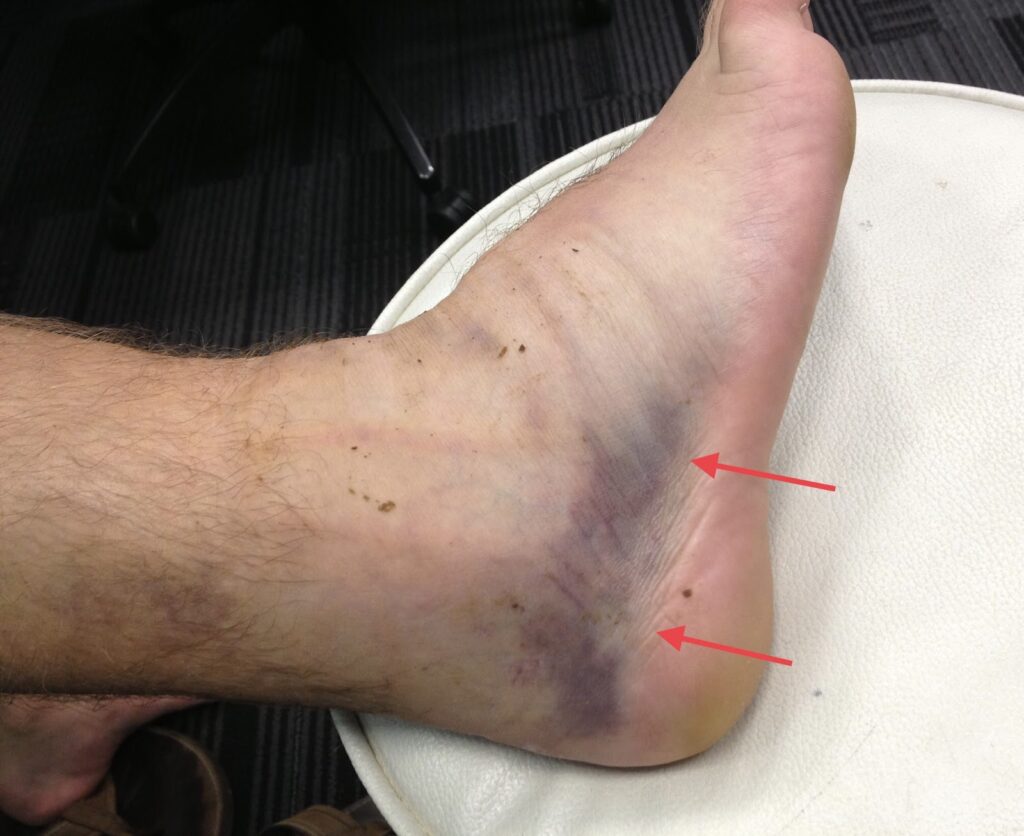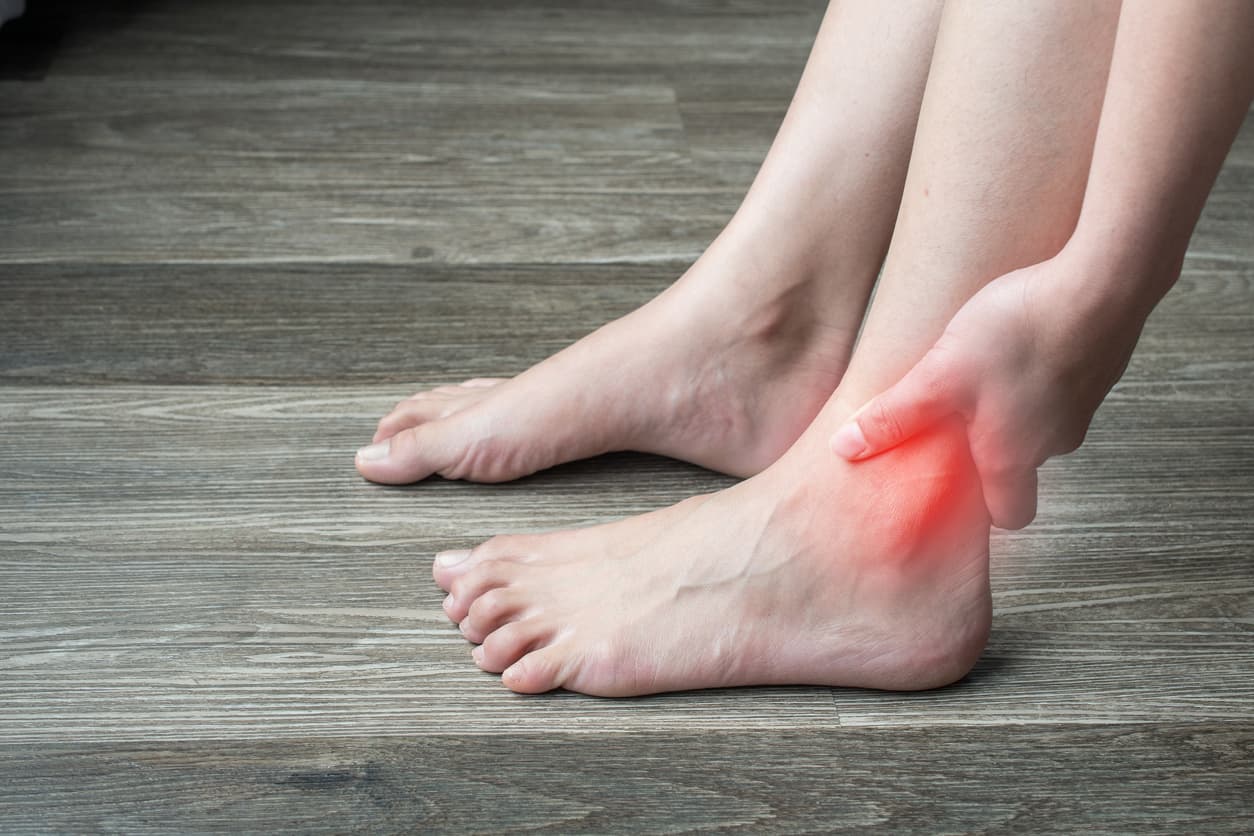Chronic Ankle Instability stands as a formidable obstacle in the lives of many individuals, casting shadows of uncertainty and vulnerability over their every step. Defined by persistent weakness and instability in the ankle joint, this condition transcends mere inconvenience, posing significant challenges to mobility, comfort, and quality of life.
As we embark on a journey to unravel the intricacies of Chronic Ankle Instability, we delve into its origins, symptoms, diagnostic approaches, and diverse treatment modalities. Through this exploration, we aim not only to illuminate the path toward understanding but also to offer hope and empowerment to those grappling with this debilitating condition.
Key questions
Questions Addressed:
- What defines Chronic Ankle Instability?;
- What are the symptoms and implications of Chronic Ankle Instability?;
- What factors contribute to the development of Chronic Ankle Instability?;
- How is Chronic Ankle Instability diagnosed?;
- What treatment options are available for Chronic Ankle Instability?;
- How can Chronic Ankle Instability be prevented?;
- What are the broader implications of Chronic Ankle Instability on daily life and mobility?
What Is Chronic Ankle Instability?
Chronic ankle instability (CAI) refers to a condition characterized by recurrent ankle sprains, feelings of giving way or instability, and persistent discomfort or pain in the ankle joint. It typically arises after an initial ankle sprain that does not fully heal or properly rehabilitate, leading to ongoing issues with the stability of the ankle joint.
CAI can result from various factors, including inadequate rehabilitation following an ankle sprain, ligament laxity, structural abnormalities in the ankle joint, weakness in the muscles surrounding the ankle, and proprioceptive deficits (problems with the body’s awareness of its position in space). Individuals with CAI often experience episodes of the ankle “giving way” or feeling unstable during activities that involve walking, running, or jumping.
Management of chronic ankle instability typically involves a combination of interventions, including physical therapy to strengthen muscles and improve proprioception, bracing or taping to provide external support to the ankle, activity modification to avoid aggravating movements, and sometimes surgical intervention in severe cases. The goal of treatment is to improve ankle stability, reduce the risk of recurrent sprains, and alleviate associated symptoms.
Signs & Symptoms Of Chronic Ankle Instability

Chronic ankle instability (CAI) can manifest through various signs and symptoms, which may include:
- Recurrent ankle sprains: Individuals with CAI often experience repeated ankle sprains, even with minimal force or movement;
- Feeling of ankle giving way: A common complaint among individuals with CAI is a sensation that the ankle is giving way or unstable, particularly during weight-bearing activities like walking, running, or jumping;
- Persistent discomfort or pain: Chronic pain or discomfort in the ankle joint, which may vary in intensity and can be present both during activity and at rest;
- Swelling: Swelling around the ankle joint may occur, particularly following episodes of instability or injury;
- Difficulty with balance: Instability in the ankle joint can lead to difficulties with balance and coordination, especially on uneven surfaces or during activities that require precise foot placement;
- Weakness in the ankle: Muscular weakness, particularly in the muscles that support and stabilize the ankle, may be present in individuals with CAI;
- Limited range of motion: Reduced flexibility and range of motion in the ankle joint, which can contribute to feelings of instability and difficulty with certain movements;
- Pain with certain movements: Pain or discomfort may be elicited with specific movements of the ankle, such as dorsiflexion (bringing the foot upwards) or inversion/eversion (rolling the foot inward or outward);
- Stiffness: Some individuals with CAI may experience stiffness in the ankle joint, particularly following periods of inactivity or after waking up in the morning;
- Functional limitations: CAI can lead to functional limitations in daily activities, sports participation, and other physical tasks due to the fear of reinjury or exacerbating symptoms.
It’s essential for individuals experiencing these signs and symptoms to seek evaluation and appropriate management from a healthcare professional, such as a physician or physical therapist, to prevent further complications and improve ankle stability.
What Causes Chronic Ankle Instability?
Chronic ankle instability (CAI) can result from a combination of factors, including acute ankle injuries that are not adequately treated or rehabilitated, anatomical abnormalities, and neuromuscular deficits. Some common causes and contributing factors include:
- Acute ankle sprains: An initial ankle sprain can weaken the ligaments and surrounding structures of the ankle, leading to instability over time if not properly rehabilitated;
- Incomplete healing: Failure to fully heal from an ankle sprain or returning to activity too soon after an injury can result in lingering instability;
- Ligament laxity: Some individuals naturally have looser ligaments, making them more prone to ankle sprains and instability;
- Muscle weakness: Weakness or imbalance in the muscles surrounding the ankle, particularly the peroneal muscles on the outer aspect of the ankle, can contribute to instability;
- Proprioceptive deficits: Proprioception refers to the body’s ability to sense its position in space. Ankle injuries can disrupt proprioceptive feedback, leading to decreased coordination and balance, which can contribute to instability;
- Anatomical factors: Structural abnormalities in the ankle joint, such as a high arch or flat foot, can increase the risk of ankle instability;
- Previous injuries: Individuals who have experienced multiple ankle injuries or have a history of ankle instability are more likely to develop chronic ankle instability;
- Poor footwear: Inappropriate footwear or inadequate ankle support during physical activity can increase the risk of ankle injuries and instability;
- Environmental factors: Participating in activities that involve uneven surfaces, sudden changes in direction, or high-impact movements can increase the risk of ankle injuries and contribute to chronic instability;
- Genetic predisposition: Some individuals may have a genetic predisposition to ankle instability, making them more susceptible to recurrent sprains and chronic instability.
Overall, chronic ankle instability is often multifactorial, with a combination of anatomical, biomechanical, and neuromuscular factors contributing to its development. Effective management typically involves addressing these underlying factors through rehabilitation, strengthening exercises, proprioceptive training, bracing or taping, and sometimes surgical intervention in severe cases.
How To Diagnose Chronic Ankle Instability

Diagnosing chronic ankle instability (CAI) typically involves a comprehensive evaluation by a healthcare professional, such as a physician or a physical therapist. The diagnostic process may include the following steps:
- Medical history: The healthcare provider will inquire about the patient’s medical history, including any previous ankle injuries, the frequency and severity of symptoms, and any treatments or interventions that have been attempted;
- Physical examination: A thorough physical examination of the ankle joint will be conducted to assess for signs of instability, such as laxity of the ligaments, swelling, tenderness, and range of motion deficits. Special tests, such as the anterior drawer test and talar tilt test, may be performed to assess ligament stability;
- Functional assessment: The healthcare provider may assess the patient’s functional abilities, balance, and proprioception through various functional tests and maneuvers. This helps to determine the impact of ankle instability on daily activities and sports participation;
- Imaging studies: In some cases, imaging studies such as X-rays, MRI (magnetic resonance imaging), or CT (computed tomography) scans may be ordered to assess the extent of ligament damage, evaluate for structural abnormalities, and rule out other potential causes of ankle pain and instability, such as fractures or osteochondral lesions;
- Gait analysis: Observing the patient’s gait pattern and walking mechanics can provide valuable information about any abnormalities or compensatory movements that may contribute to ankle instability;
- Functional testing: Functional tests, such as single-leg balance tests, hopping tests, and agility drills, may be performed to assess the patient’s dynamic stability and functional capacity;
- Patient-reported outcome measures: Questionnaires and scales may be used to assess the patient’s symptoms, functional limitations, and quality of life related to ankle instability.
Based on the findings of the evaluation, the healthcare provider can make a diagnosis of chronic ankle instability and develop an appropriate treatment plan. Treatment typically involves a combination of conservative measures, such as physical therapy, bracing or taping, activity modification, and in some cases, surgical intervention to stabilize the ankle joint. Early and accurate diagnosis is crucial for effectively managing chronic ankle instability and preventing further complications.
Treatment For Chronic Ankle Instability

The treatment for chronic ankle instability (CAI) typically involves a combination of conservative measures and, in some cases, surgical intervention. The specific approach to treatment may vary depending on the severity of symptoms, functional limitations, underlying causes, and individual patient factors. Here are some common treatment options:
- Physical therapy: A structured physical therapy program is often the cornerstone of treatment for CAI. Physical therapists can design a customized rehabilitation program aimed at improving ankle strength, flexibility, proprioception, and balance. Exercises may include strengthening exercises for the muscles surrounding the ankle, balance training, and neuromuscular re-education;
- Bracing or taping: External support, such as ankle braces or athletic tape, may be used to provide stability to the ankle joint during physical activity. These devices can help reduce the risk of recurrent sprains and improve proprioceptive feedback. A healthcare provider can recommend the most appropriate type of brace or taping technique based on the individual’s needs and activity level;
- Activity modification: Modifying activities that exacerbate symptoms or increase the risk of ankle injury can help prevent further instability and promote healing. This may involve avoiding high-impact activities, minimizing activities on uneven surfaces, and gradually reintroducing physical activity as symptoms improve;
- Footwear modification: Wearing supportive and properly fitting footwear can help reduce stress on the ankle joint and provide additional stability. Orthotic inserts or custom-made orthotics may be recommended to address underlying biomechanical issues, such as overpronation or supination;
- Proprioceptive training: Proprioceptive exercises aim to improve the body’s awareness of joint position and movement, which is often impaired in individuals with CAI. These exercises may include balance drills, proprioceptive challenges on unstable surfaces, and agility training to enhance neuromuscular control;
- Nonsteroidal anti-inflammatory drugs (NSAIDs): Over-the-counter or prescription NSAIDs, such as ibuprofen or naproxen, may be used to help alleviate pain and inflammation associated with CAI. It’s important to use these medications as directed and under the guidance of a healthcare provider;
- Corticosteroid injections: In some cases, corticosteroid injections may be considered to reduce inflammation and pain in the ankle joint, particularly if symptoms are severe and not responsive to other treatments. However, the use of corticosteroid injections is typically limited due to potential side effects and the risk of weakening the ligaments;
- Surgical intervention: In cases of severe or refractory CAI, surgical intervention may be necessary to restore stability to the ankle joint. Surgical procedures may involve repairing or reconstructing damaged ligaments, addressing structural abnormalities, or stabilizing the joint through arthroscopy or open surgery.
The choice of treatment approach depends on various factors, including the patient’s symptoms, functional limitations, activity level, and response to conservative measures. A healthcare provider, such as an orthopedic surgeon or physical therapist, can help guide treatment decisions and develop an individualized plan to address chronic ankle instability effectively.
Prevention
Preventing chronic ankle instability (CAI) involves addressing risk factors and implementing strategies to reduce the likelihood of ankle injuries. Here are some preventive measures individuals can take:
- Proper rehabilitation: Ensure thorough rehabilitation following an ankle injury, including appropriate rest, immobilization if necessary, and a structured physical therapy program to restore strength, flexibility, and proprioception;
- Ankle strengthening exercises: Incorporate exercises that target the muscles surrounding the ankle, such as calf raises, ankle dorsiflexion and plantarflexion exercises, and ankle eversion and inversion exercises, to improve ankle stability and reduce the risk of future injuries;
- Balance and proprioception training: Perform balance and proprioceptive exercises regularly to enhance joint awareness and neuromuscular control. This can include single-leg balance drills, standing on unstable surfaces (e.g., balance boards or foam pads), and agility drills;
- Footwear selection: Wear supportive and properly fitting footwear that provides adequate cushioning, stability, and traction, especially during physical activity. Consider using orthotic inserts or custom-made orthotics to address biomechanical issues and reduce the risk of overpronation or supination;
- Bracing or taping: Use ankle braces or athletic tape during sports or activities that involve high-risk movements to provide additional support and stability to the ankle joint. A healthcare provider can recommend the most suitable type of brace or taping technique based on individual needs and activity level;
- Gradual return to activity: Gradually reintroduce physical activity and sports participation following an ankle injury, starting with low-impact activities and gradually progressing to higher-intensity exercises. Avoid returning to full activity too soon to allow adequate time for healing and rehabilitation;
- Warm-up and cool-down: Always warm up before engaging in physical activity to prepare the muscles and joints for movement, and cool down afterward to aid in recovery and reduce muscle soreness. Incorporate dynamic stretches and mobility exercises targeting the ankles into your warm-up and cool-down routines;
- Environmental awareness: Be mindful of the surfaces and environments in which you engage in physical activity, avoiding uneven or unstable surfaces whenever possible to reduce the risk of ankle sprains and instability;
- Maintain a healthy weight: Excess body weight can increase stress on the ankles and other joints, potentially predisposing them to injury. Maintaining a healthy weight through regular exercise and a balanced diet can help reduce the risk of ankle injuries;
- Regular assessment and maintenance: Regularly assess your ankle health and functional abilities, and address any issues promptly with appropriate treatment or preventive measures. This may include periodic check-ups with a healthcare provider, ongoing physical therapy, and adjustments to footwear or orthotic devices as needed.
By incorporating these preventive strategies into your routine, you can reduce the risk of developing chronic ankle instability and maintain optimal ankle health for long-term mobility and function.
Conclusions
Chronic Ankle Instability emerges not merely as a physical ailment but as a profound disruptor of daily life, casting a shadow of uncertainty and restriction over even the simplest of movements. Yet, within the depths of this challenge lie opportunities for resilience, empowerment, and healing. By embracing a multidimensional approach encompassing proper diagnosis, tailored interventions, and proactive prevention strategies, individuals can reclaim control over their mobility and well-being.
As we navigate the complexities of Chronic Ankle Instability, let us not falter in our pursuit of solutions, but rather, let us draw strength from our collective efforts to overcome, adapt, and thrive in the face of adversity.


